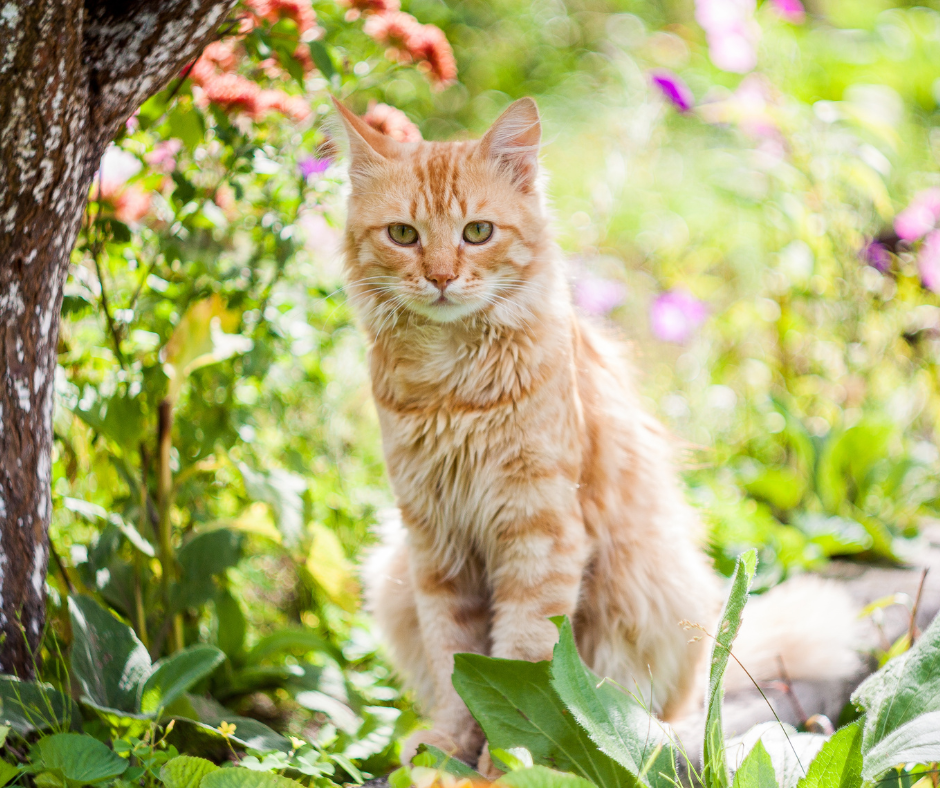It is ALWAYS scary letting the cat out for the first time. Everyone is worried that they will take-off and never ever come back. Maybe you have just taken on a new kitten or cat or have moved house with an existing cat? Whatever the situation, it is understandable that it is a nerve racking time for any cat owner.
Here are some tips to help ease the process and give you peace of mind:
Getting them ready for the great outdoors
You can gradually start introducing your cat to going outside at around the age of 6 months, once they have been neutered and fully vaccinated.
Up to date injections: To protect your cat from unwanted diseases in the outside world, it’s essential that your cat is fully vaccinated before you let them outside. Kitten’s first vaccinations start at about 9 weeks, with another injection at about 12 weeks.
There are three main diseases which cats are vaccinated against in their primary boosters: cat flu, feline enteritis and feline leukemia. Once your cat or kitten has been vaccinated, they will require annual boosters. Catteries will ask to see evidence of up-to-date vaccinations before allowing your cat to stay.
Neuter/Spay: To prevent unwanted pregnancies it is wise to get females spayed before allowing outside. Unspayed females can have up to 3 litters a year. It is advisable to get males neutered too as un-neutered males travel further seeking females and will mark everywhere around your home and outside which has a pungent smell.
Ensure your cat is microchipped: The chip contains details, including your address which will show up the moment it is taken to a vet. The chip is as small as a grain of rice and is put within the scuff of the neck of the cat and it is painless. They might feel a tiny pinprick but it is over in seconds.
Get a Collar: Get your kitten used to wearing a collar early on. The collar should have your contact details on and should not be too loose around the neck or it could get caught on something. Remember to re-adjust the collar if your cat is still growing.
Introducing them to the great outdoors
Ensuring that your cat feels loved and taken care of in your home is essential to making sure they return after their outdoor adventures. If possible start at the weekend or on a day when you are there for your cat’s first adventure outside. Don’t feed them before you let them outside for the first time, making sure their hungry helps to encourage them to return home for food.
Recall: It’s really important to make sure your cat comes back when it is called or when you make a noise, like the shaking of their favourite treats. Start working on this before you introduce them to the garden. Once your recall has been established you are set to go and open those doors
Go out with your cat: Start taking your cat out a little at a time you can do this with or without a harness. Talk to them calmly, stroking them and sitting with them for the first few times and then bring them in after 10-15 minutes for feeding.
Your cat will be curious and nervous at the same time but they need to get used to the garden, its smells, its boundaries, and the route back in again. Play with them outside and make it a fun time. Keep doing that every day. Don’t force your cat out if it really doesn’t want to go outside. The whole process should be gentle and go at the cats’ pace, not your own.
The first time on their own: Once the first trip outside is complete, you can gradually increase the amount of times your cat is allowed outside. As they build up their confidence your cat will wander further afield because they will be exploring and establishing their territory and home range. Don’t worry, cats have great sense of direction. Males have a much wider home range than females, who will stay close to the home, possibly only venturing a garden away.
Other cats: Your cat will need to establish its territory and do what all cats have to do. There may be scuffles but this is totally natural and hopefully they will sort it out amongst themselves and your cat will learn where and where not to go
Cat flaps: There are lots of cat flaps to choose from. Microchip ones do not allow other cats to come into your home. It’s fairly easy to get your cat used to using the cat flap. Have one person stand on one side and you on the other and keep passing the cat through until they understand.
Nighttime: Cats’ come alive at night, it’s the time they go out and hunt for prey. Maybe shut the cat flap at night in the early stages whilst your cat gets used to his/her new freedom.
Provide water and shelter: If you are out at work during the day ensure your cat has access to fresh water and shelter, particularly during the summer, when it’s vital your cat keeps hydrated, cool and comfortable. Any extreme weather conditions should be observed and, if in doubt, keep your cat in where it’s safe and warm.
If your new home is only a few streets away from your old one, then there is a chance your cat may return to familiar territory. Before moving, ask the new owners and any neighbours who knew your cats to keep a look out in case they come back. Make sure that they have your telephone number in case you need to come back and collect them.
We hope all of your cats can enjoy and investigate the great ourdoors safely!
M+C





